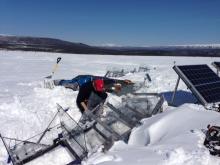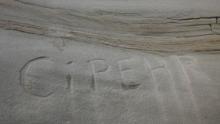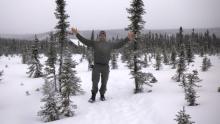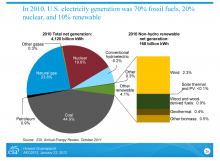Update
Archived PolarConnect Event
Tuesday, 30 April 2013 PolarTREC teacher Tom Lane hosted a PolarConnect event LIVE from the field in Healy, Alaska.The event is now available in the PolarConnect Archives.
What Are They Doing?
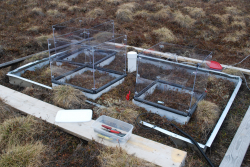
Little is known about respiration in the arctic winter. The team used five different methods in hopes of finding the best way to measure how much carbon is being released from northern ecosystems in the winter. Measuring winter respiration directly from experimentally warmed plots and understanding the drivers of wintertime tundra respiration will have the added benefit of being able to improve global arctic carbon models. More information about the project can be found here.
Where Are They?
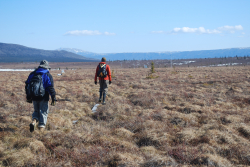
Latest Journals
Sue Natali is an assistant scientist at Wood Hole Research Center (WHRC). Her research focuses on the interactions and feedbacks between plant and soil communities and their environment and seeks to better understand the impacts of environmental change on ecological processes and biogeochemical cycles. Dr. Natali conducts her research in boreal and tundra ecosystems in Alaska and Siberia. Learn more about Dr. Natali and her work at the WHRC webpage.

Ted Schuur is an Associate Professor of Ecosystem Ecology within the Department of Botany and Zoology at the University of Florida. His research focuses on the interaction between carbon cycling in terrestrial ecosystems and climate change. Dr. Schuur is particularly interested in the exchange of carbon between plants, soils, and the atmosphere, and the response to changes in climate and disturbance regimes.

Elizabeth Webb is a Master's student at the University of Florida. Her research in Alaska focuses on wintertime soil respiration. Specifically, she is looking at what factors drive wintertime respiration (temperature, moisture, etc.), how much carbon is coming out of the tundra during the winter, and how this will change with climate warming. More generally, Ms. Webb is interested in large-scale problems such as how land-use change is impacting global rivers and oceans, and how climate change is impacting the biosphere.

